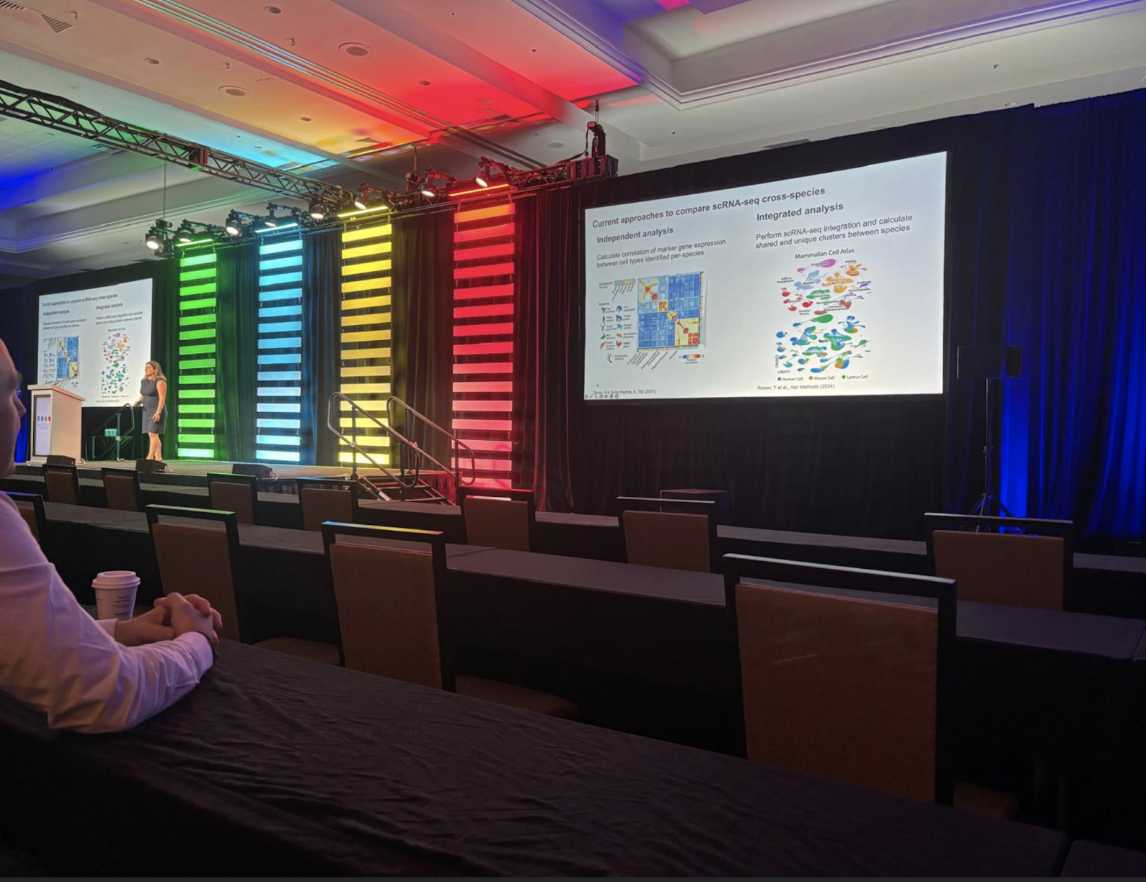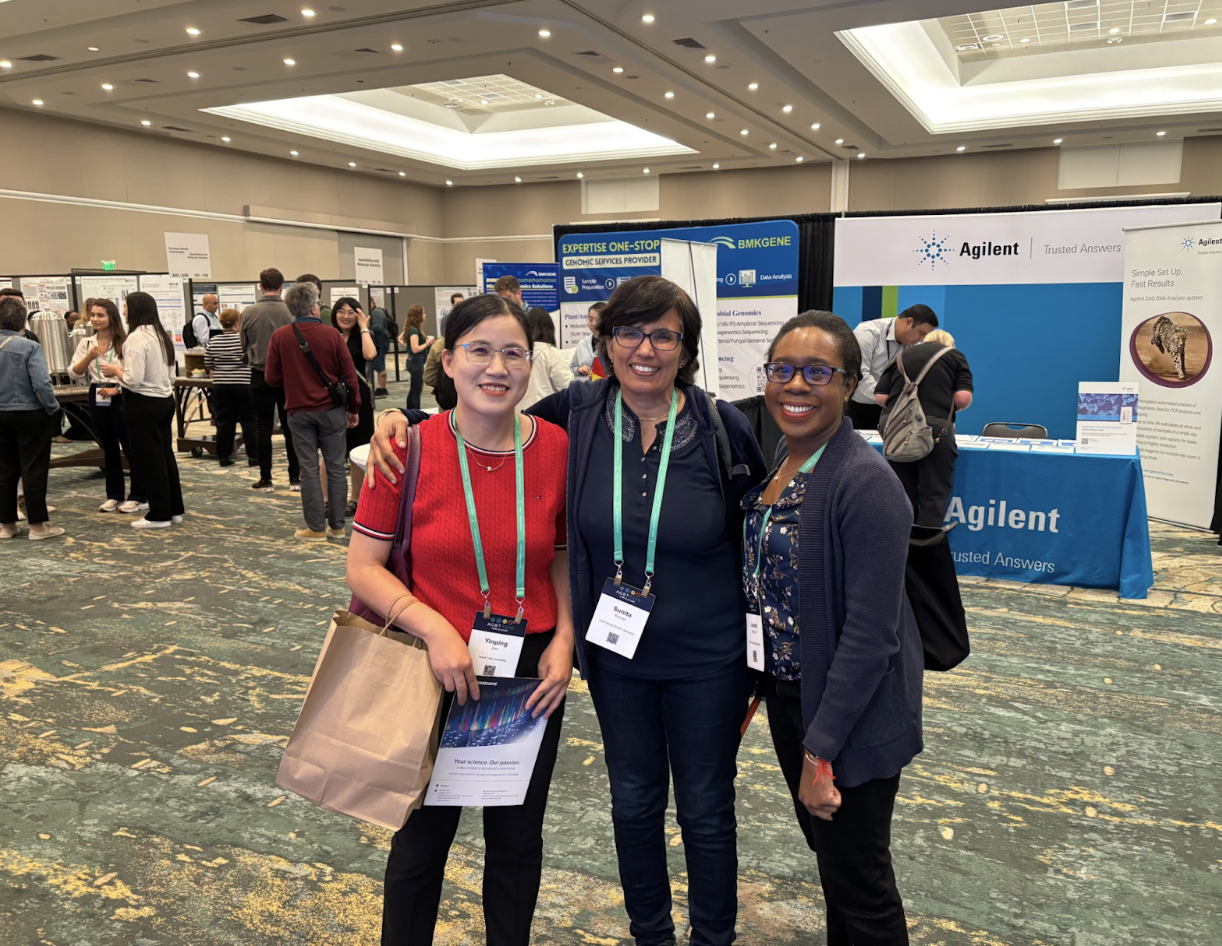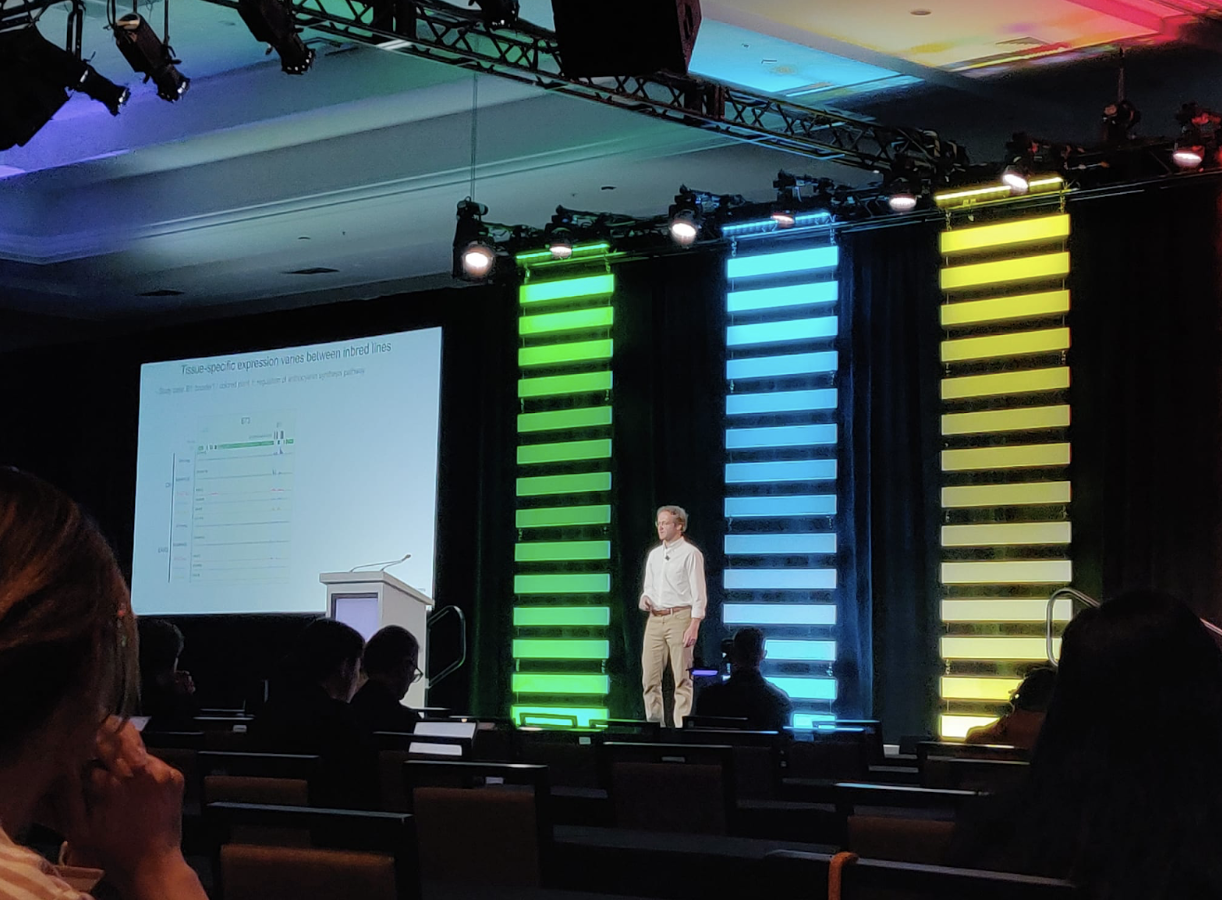The Advances in Genome Biology and Technology (AGBT) Agricultural Meeting 2025 took place from March 31 to April 2 in Orlando, Florida. This annual event convened leading genome researchers, data scientists, breeders, policy influencers, funders, and technology innovators from around the world to discuss the integration of genomics in agriculture. There were eight plenary sessions comprising 17 talks including a diverse range of selected abstract talks, highlighting research across both livestock and plant systems. Plenary sessions started with talks related to major themes on global opportunities and challenges for agriculture, applying the science, re-evolving the genome, informatics and data analytics, transdisciplinary technologies, quantitative and molecular genetics and ended with talks on cutting edge new ideas and opportunities. The conference started with the interesting key talks on “The future of food” and “Real time portable genomics for food security” by Dr Molly Jahns (University of Wisconsin) and Dr. Laura Boykin Okalebo (Amazon Web Services) that were focused on agricultural innovation and the challenges of using genomics and high performance computing research to provide solutions for real world problems. Dr. Okalebo provided a groundbreaking initiative that leverages genomics and supercomputing to combat cassava pathogens in East Africa, emphasizing the real time genomics for one health. Other keynote talks given by Irene Papatheodorou (Earlham Institute) talked about the importance of metadata standards and open science, emphasizing FAIR principles in large-scale biological data. Blake Meyers (UC Davis) provided insights on the role of small RNAs and regulatory mechanisms in plant development and stress response. Charles Underwood (Radboud University, Netherlands) presented exciting advances in plant genome engineering and reproductive biology, using tomato and its wild relatives as a model system to study chromosome pairing and recombination during meiosis. His research focuses on both enhancing genetic ‘shuffling’ to increase diversity during meiosis, and suppressing it entirely to enable clonal reproduction. The ultimate goal is to first generate varieties with desired traits through recombination, and then propagate them clonally. The concept is that after sufficient genetic shuffling has produced a hybrid with optimal traits, it becomes advantageous to clonally reproduce it to preserve those traits unchanged. It’s akin to printing newspapers—once the final edition is ready, the goal is to produce identical copies at scale.
Dr. Janeen Braynen, Dr. Jonathan Cahn and Dr. Hagai Shohat, all researchers at Cold Spring Harbor Laboratory (CSHL) addressed innovative solutions to agricultural challenges and featured transcriptional regulation under nutrient stress in maize, sorghum using gene networks to better understand plant responses to nitrogen availability and on enhancers and enhancer RNAs shaped maize domestication, offering fresh insight into the regulatory elements that influenced maize evolution. Dr. Shohat talked about Solanum pan-genome and its comparative forward and reverse genetics across related species to analyse paralogue evolutionary dynamics in depth.
In addition to keynote addresses, the meeting offered four workshops focusing on practical applications of genomic technologies in agriculture. Topics ranged from bioinformatics tools for crop improvement to ethical considerations in genome editing. These interactive sessions facilitated knowledge exchange and skill development among participants. One Standout session was the single-cell workshop, spearheaded by Dr. Christopher Tuggle (University of Iowa) and Dr. Sunita Kumari (CSHL), which explored the applications and challenges of single-cell RNA sequencing in agricultural research.




